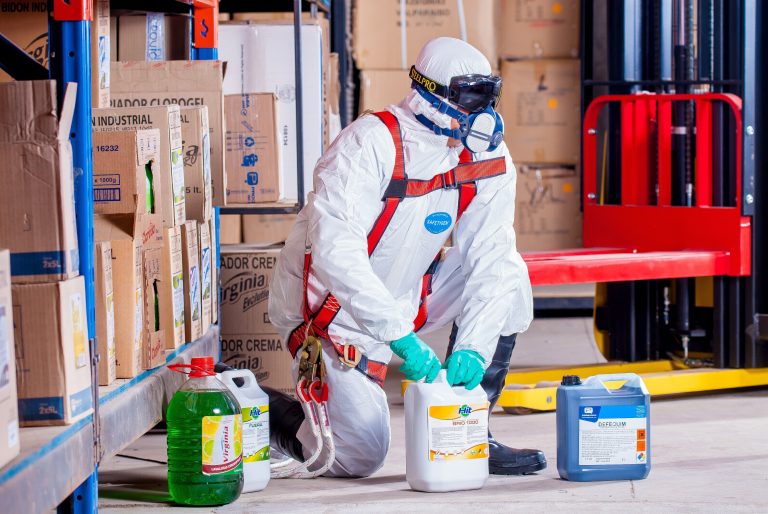Perceived cleanliness has always been able to make or break a company’s reputation, but that is two-fold as the pandemic continues. People are on high alert and want reassurance that public spaces are being properly cleaned and disinfected.
With supply shortages, many businesses have been forced to use different cleaning chemical brands in order to maintain their cleaning routines without lapse. While chemicals work wonders to keep indoor environments clean and safe, they can also be extremely hazardous and even fatal if used improperly. In fact, according to the Centers for Disease Control and Prevention (CDC), during the beginning of the pandemic from January through March of 2020, poison centres received 45,550 exposure calls related to cleaners and disinfectants, a 20.4 per cent increase from 2019.
So, how can organizations ensure they are cleaning both effectively and safely?
Systems that support the cleaning process
Chemical dispensers, while not new, have become increasingly popular and have helped organizations safely and easily adopt new chemicals since they eliminate the need for employees to pour, measure, or mix chemicals. These wall-mounted or portable systems house one or multiple chemicals, depending on the user’s cleaning needs.
A chemical dispenser works by diluting a specific ratio of concentrated chemicals with water and dispensing it into the appropriate container. Users simply connect to a water source and the chemical dispenser releases an accurate solution designed to tackle the cleaning task at hand. This ensures cleaning agents are always working to their optimal performance and helps eliminate the need to reclean. Beyond enhancing safety and accuracy, dispensers are also cost-effective systems since they control the amount of chemical being delivered.
Tips for selecting and implementing a chemical dispenser
Chemical dispensers continue to evolve and innovate, and now there are a variety of convenient solutions to meet a range of needs. Whether you’re cleaning surfaces, warewashing, or laundering, it’s important to understand the options available in order to select the right system. B
elow are best practices for selecting a chemical dispenser:
- Do your research – Partner with a vendor that designs dispensers to meet your specific applications. Look for high-quality systems that are intuitive, easy-to-use and, most importantly, accurate. A quality system should be able to fill all types of containers with proper dilution by taking water pressure and level into account. This ensures that the solution will always be primed for optimal performance. Look for systems that are easy to maintain and provide specific maintenance instructions and troubleshooting to help avoid costly repairs and downtime.
- Consider an all-in-one system – Facilities that require the use of multiple chemicals to complete cleaning tasks should consider an all-in-one system. These wall-mounted units provide a one-stop shop for cleaning products. Look for a colour-coded system that allows dilution control for multiple chemicals at multiple flow rates. In addition, opt for a system that safely stores each chemical behind locked enclosures to maximize safety.
- Consider portable solutions – Portable dispensing solutions offer added cleaning flexibility. If you have a smaller operation, a handheld chemical dispenser with an adjustable flow rate provides a low-cost, transportable option. Select a unit with a lightweight ergonomic design that is easy to use, grip, and lock. For larger facility areas, select a portable unit that has the ability to switch from foaming to spraying. Foaming is an efficient way to clean and sanitize large areas as it allows the cleaning chemical to penetrate the entire surface, including hard-to-reach places. Look for a tether design that enables users to connect to containers of any size or with any thread.
- Get connected – For laundry and dishwashing solutions, consider systems that leverage cloud-based Internet of Things (IoT) platforms. This allows real-time visibility to help improve operations and access to historical data to help identify and resolve productivity issues. Select a vendor that uses the latest security and encryption techniques to protect your sensitive information. Real-time access and visibility helps ensure dishes and linens stay spotless around the clock.
- Train staff – Regardless of how user-friendly your dispensers are, training is always imperative when introducing new cleaning equipment. It gives staff the confidence and know-how to perform their tasks correctly each and every time. Educate employees regarding the proper personal protective equipment to wear, the chemicals inside each dispenser, what they do, how they work, and what surfaces they should be applied to. Thoroughly demonstrate how to operate dispensers so employees can confidently and safely use them, especially portable solutions in customer-facing areas.
Safe, quality results
Modern chemical dispensers are an ideal way for facilities to ensure surfaces and items are truly clean with the right concentration of cleaning chemical. Beyond providing accurate cleaning and disinfecting solutions, these systems protect employees from chemical exposure and eliminate chemical overuse or underuse.
For optimal performance, it’s important for businesses to carefully select precise, high-quality dispensers designed to meet their specific cleaning applications. The result is a cleaner, healthier environment and a cleaning team that can successfully keep up with today’s expectations and infectious disease risks.
Scott Campbell is a global product manager for Hydro Systems, a world leader in delivering chemical dispensing and dosing solutions. For more information, visit www.hydrosystemsco.com.









